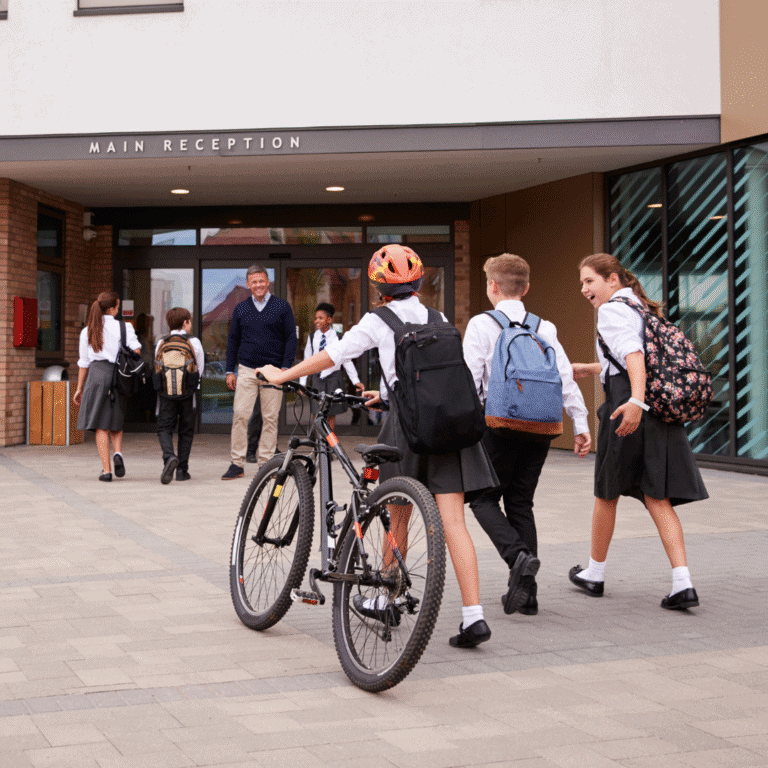

Empowering Our Children Through Pupil Premium Plus
As foster carers, you play a vital role in a child’s life. Understanding the support available for their education is key.
One great resource in the UK is Pupil Premium Plus (PP+). This is a government initiative designed to give disadvantaged children, including those who are or have been looked after, the extra boost they need to succeed in school.
What is Pupil Premium Plus All About?
At its heart, PP+ is about fairness and opportunity. It’s a special grant given to schools to help improve the educational outcomes for children who are identified as disadvantaged. This includes a crucial group: children who are currently in care, or who have been in care in the past. The aim is to help these children catch up with their peers, achieve their full potential, and build a brighter future.
How Much Is It?
For 2025-2026 financial year, it’s £2,630 per eligible child!
Who’s Eligible?
- Children who have been looked after for at least one day during the year ending March 2025 – as recorded in the March 2025 children looked-after data return – and who were aged between 4 to 15 on 31st August 2024.
- Children with an EHCP should have personalised additional support in place in school so they can access an effective education. PP+ funding can still be requested to provide additional items or to enhance provision further.
How Does the Funding Reach Our Children?
This is where it gets interesting! PP+ isn’t handed directly to individual families. It’s designed to benefit your child directly in their school setting. Here’s how it works:
- Managed by Virtual School Headteachers: The funding is given to local authorities and then managed by the Virtual School Headteacher (VSH). The VSH is a champion for all looked-after children in their area, ensuring their educational needs are prioritised.
- Flexible Allocation: The VSH can either pass all of the funding directly to the child’s school, or they can retain some of it to fund activities that will benefit a group of, or all, looked-after children in the local authority. This flexibility allows for broader support initiatives, such as specialised training for teachers or group mentoring programmes.
- School-Led Decisions (with a plan!): PP+ isn’t a personal budget for individual pupils. Schools are expected to assess the specific needs of their cohort of disadvantaged pupils and decide how best to use the funding to be most effective.
- Multi-Academy Trusts can pool resources for use of PP+ funding across schools.
- Evidence-Informed Approaches: Virtual Schools work closely with schools to ensure the funding is used effectively to help deliver outcomes identified in a child’s Personal Education Plan (PEP). This means that any activities funded must be found within the menu of approaches and be evidence-informed.
- The Education Endowment Foundation publishes evidence-informed strategies to guide schools in choosing the most effective approaches by impact and cost.
How Can You See How PP+ is Being Used?
Transparency is key! As a foster carer, you have every right to know how this vital funding is benefiting the child in your care:
- School Website Strategy Statements: Schools that receive PP+ funding for more than five eligible pupils are required to publish a Pupil Premium strategy statement on their website by December 31st each year. This demonstrates how the school is using the funding to improve educational outcomes and raise attainment of disadvantaged pupils.
- Personal Education Plan (PEP) Meetings: These regular meetings (which should happen three times a year) are the opportunity to discuss your child’s educational progress. The use of PP+ funding and its impact on your child’s attainment should always be a key discussion point. You as carers, a representative from the school and your child’s social worker should all attend.
- Ask your child’s social worker: they attend each PEP meeting and usually have access to the PEP document online which is a record of the funding school have requested to support your child to achieve their PEP targets.
- Ask the School Directly! Don’t hesitate to speak to your child’s school. They should be able to explain how the PP+ funding is being used and how it specifically benefits your foster child.
What About Early Years Children?
The support doesn’t just start in primary school! Early years providers (like nurseries and childminders) can also apply for Early Years Pupil Premium for looked-after children aged 9 months to 4 years. This can include children aged 3 or 4 who receive 15 hours of free childcare. This early intervention is incredibly important for laying strong foundations for future learning.
What About Children in post-16 Education?
PP+ funding changes once children have reached the age of 16. Local Authorities have been awarded a funding grant which will be paid in 2 instalments: September 2025 and January 2026. The purpose of this grant is to provide additional funding, via the Virtual School, for post-16 children who are looked-after or are care leavers. Each Virtual School will have information about the support they provide and this should be a discussion point during each PEP meeting that you attend for your foster child.
Your Role is Essential!

As foster carers, your insights into a child’s needs and progress are invaluable. By understanding PP+ and engaging with your child’s school and Virtual School, you can help ensure that the funding is used in the most impactful way to support their educational journey. This funding, combined with your dedication, truly helps to unlock the potential of the children and young people you care for and create a brighter future.
Thank you for the support and care that you provide to the young people in your world💙
Find out more:
Read more at: https://www.gov.uk/government/publications/pupil-premium/pupil-premium#funding-for-looked-after-children
See the menu of approaches: https://d2tic4wvo1iusb.cloudfront.net/production/documents/guidance-for-teachers/pupil-premium/Pupil-Premium-resource-evidence-brief.pdf?v=1695997833
Check the EEF Toolkit for effective strategies: https://educationendowmentfoundation.org.uk/education-evidence/teaching-learning-toolkit
Kate, our FCC Education Specialist, provides our foster carers with support and advice related to the educational development of the children they are caring for. Click to find out more about our Education Specialists and the support they provide for foster carers.





